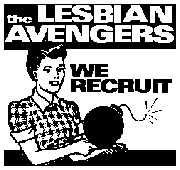Transgender Youth Action and Organizing
Copyright (c) by Dina Mazina and Rebecca DiBrienza, 2008. All rights reserved.
Transgender youth remain a distinct part of the queer community, focusing their battles on gender representation rather than sexual orientation like many of their gay and lesbian counterparts. Transgender issues gained visibility in the public eye following the well-publicized violence against young transgender individuals, like Brandon Teena, and the reactions were very similar to the reactions of the gay community to the murder of Matthew Shepard: outrage followed by activism. Similar to their gay and lesbian predecessors, transgender students have fought for the right to organize groups, demand safe schools, and establish visibility. [1]
In the early 21st century, transgender adults looking back at their high school days often discussed their high school environments as being unwelcoming, causing many individuals to never finish their education. In 2001, what gender activists called a “groundbreaking preliminary court ruling,” [2] officially supported Pat Doe, a fifteen-year-old transgender woman, in her decision to dress as a girl, despite being biologically male.

Doe was barred from attending classes after the principal of her school in Brockton, MA decided her gender presentation was too disruptive for class, and the court ruled in her favor. Young transgender individuals like Doe often find support in older queer organizations like the Boston Area Lesbian Avengers. In addition to transgender representation in the mass media and active older queer groups, Shannon Minter, a senior staff attorney for the National Center on Lesbian Rights, says that new technology has been a significant help in providing much needed support and education to young transgender individuals. Minter, a female-to-male transsexual himself, predicted, “the Internet is going to be the midwife to the trans community.” [4]
Transgender college students have also taken actions on their campuses in order to establish a more inclusive and aware community. In April of 2003, students at Smith College, traditionally an all-female school and one of the Seven Sister women’s colleges, voted to strike gender-specific pronouns from their constitution, a motion that passed by only 50 votes. Smith’s growing male-to-female transsexual population led students to consider the reality that “a significant portion” of the student body does not identify as female. [5] Responding similarly to their increasing transgender population, in 2003 Wesleyan University created “gender-blind” residence halls, an alternative to the gendered options of men’s, women’s, and coed.[6]
References
- ↑ Scanlan-Stefanakos, Victoria. "Youth Trans-Action: Transgendered teens are taking control of their issues and demanding respect in school. " The Advocate 10 Apr. 2001: 42. Research Library. ProQuest. Bryn Mawr College Library, Bryn Mawr, PA. 12 Dec. 2007 <http://www.proquest.com/>
- ↑ Scanlan-Stefanakos, Victoria. "Youth Trans-Action: Transgendered teens are taking control of their issues and demanding respect in school. " The Advocate 10 Apr. 2001: 42. Research Library. ProQuest. Bryn Mawr College Library, Bryn Mawr, PA. 12 Dec. 2007 <http://www.proquest.com/>
- ↑ http://www.outcast-films.com/films/su/images/vol1_avenger.jpg.
- ↑ Scanlan-Stefanakos, Victoria. "Youth Trans-Action: Transgendered teens are taking control of their issues and demanding respect in school. " The Advocate 10 Apr. 2001: 42. Research Library. ProQuest. Bryn Mawr College Library, Bryn Mawr, PA. 12 Dec. 2007 <http://www.proquest.com/>
- ↑ "Smith College Students Strike Gender-Specific Terms From Their Constitution. " The Chronicle of Higher Education 9 May 2003: A.35. Research Library. ProQuest. Bryn Mawr College Library, Bryn Mawr, PA. 12 Dec. 2007 <http://www.proquest.com/>
- ↑ "Wesleyan gets beyond gender. " The Advocate 24 Jun 2003: 30. Research Library. ProQuest. Bryn Mawr College Library, Bryn Mawr, PA. 12 Dec. 2007 <http://www.proquest.com/>
<comments />